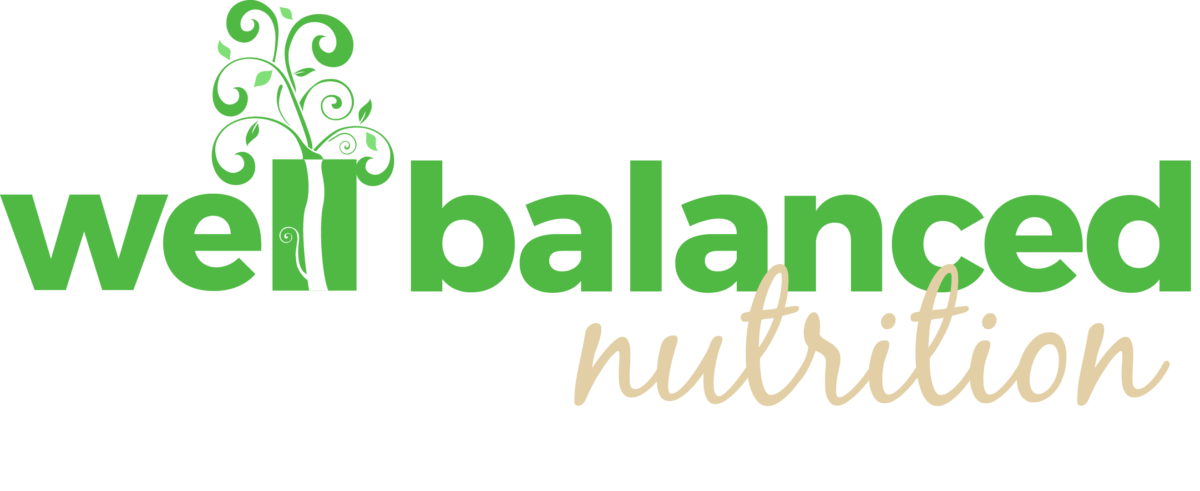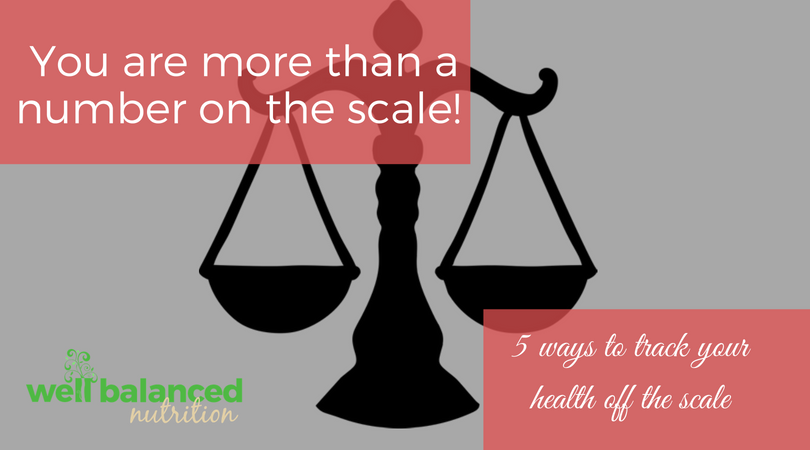
by Lucy | May 18, 2018 | Motivational Mondays
Kara showed up in my office feeling frustrated and confused, she exclaims “just when I think I’m doing well and finally losing weight, I step on the scale and see the same number for the third month in a row!“ Kara previously lost weight by eliminating most carbohydrates – motivated to look fabulous in her wedding dress – dropped 30+ lbs only to regain the weight and more. This time, Kara is taking a different approach by eating well-balanced and including 5 workouts each week. She discovered a unique gym near home that provides guided exercise with the statistical feedback through her Fitbit and heart rate monitor, which helped increase her motivation and engagement. However, she has found the process is much slower this time around.
Kara’s story is not uncommon and may sound familiar to some of you. During our conversation, Kara explains she hasn’t been to the doctor for years and worries her weight may have a negative impact on her health. She asked frankly, “can you be healthy and still carry extra weight at the same time?” The short answer, YES.
When you go to the doctor, the nurse checks your weight, height, blood pressure, temperature, pulse, etc. Often, the doctor orders lab test to get additional information about your overall health and well-being. If you were to go to the doctor and they simply checked your weight, then the doctor comes in and prescribes diabetes medications, I imagine you would be suspicious and skeptical about this diagnosis. Our body mass index – BMI – is simply one clinical indicator of health. This number does not take into account your muscle mass, bone density, or genetic background, all of which have significant impact on your health.
At Well Balanced Nutrition, we believe in health at every size. This is not a free pass to go eat a dozen donuts and sit on the sofa all weekend! Health is sum of your lifestyle, diet, and behavior choices. Checking your weight regularly, whether that means every day, once a week, or once a month is one way to track your progress. However, there are many other means of tracking.
How do you know you’re on track?
- How do your clothes fit? Have you found yourself exclusively reaching for the yoga pants, elastic waist, and loose-fitting clothes? That might be a sign that it’s time to pay closer attention to what you are eating and/or drinking. Prior to starting a workout program, you can also take measurements around your arms, waist, hips, and thighs. That way, in case you gain muscle and do not lose weight, you will likely still lose inches.
- What are you eating? I know firsthand, how someone has eaten for the last 3 days is how they have “always eaten.“ We humans have terrible memories for the details of what we consumed lately unless there is some means of tracking. That might be an app, paper food journal, or picture journal.
- How is your mood? Personally, when I don’t eat well, get insufficient sleep, or less physical activity I feel awful. I’m a little extra irritable, moody, and generally less fun to be around – just ask my boyfriend! Pay attention to your mood and ask yourself “WHY am I feeling the way I feel?” Has something in your routine changed?
- How are you sleeping? Sleep is directly impacted by our day-to-day choices. Some people notice they sleep poorly if they eat simple carbohydrates, especially refined sugar, after 7 PM. Others report sleeping poorly if they have too much alcohol to drink or not enough water.
- What is your energy level? It could be low due to an extra stressful week, catching up from vacation, or having a sick child at home. Our energy level is all highly impacted by what we eat and how we spend our free time.
Food for thought:
If health is not determined by our weight, why do we keep letting that darn number on the scale tell us about our self-worth and well being? You are more than a number! What other means of tracking helps you know you are Well Balanced?

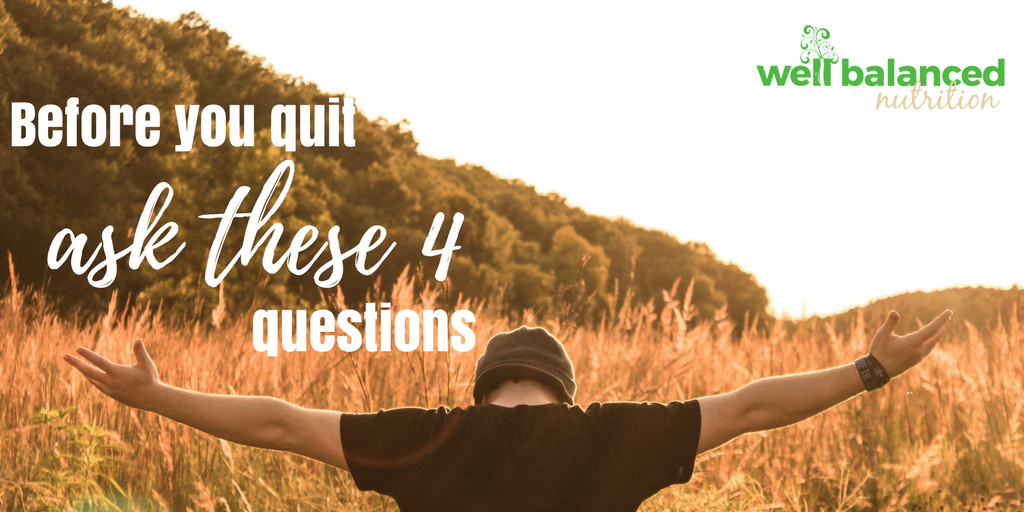
by Lucy | Feb 5, 2018 | Motivational Mondays
Photo by Alex Woods on Unsplash
Monday, Feb 5, 2018
When we start a new project or challenge it’s easy to get swept up in the excitement of doing something new or different. Then we may hit a roadblock, get off track or just get bored and it starts to fizzle.
Were you invigorated to start a few new healthy habits in the New Year? Now you find yourself off-track and bogged down with to-do lists, chores, an illness, or just feeling tired. It happens! Life gets busy and often we are our own biggest critic.
In a recent teaching at Grace Church, in Chapel Hill, NC, I got a great reminder from the pastor to revisit the basic questions to reignite the energy and get back on the road to feeling happy and healthy.
1. What’s your why?
Why is this goal important to you? How will you feel when you’ve accomplished this goal?
2. What is true?
Maybe you did not have time to batch cook for the work week, but you did go grocery shopping and purchased the foods that make you feel better. Your inner critic may try to call that a failure, but what’s true is that you took steps toward a Well-Balanced life. Instead of thinking about what did not get done, sometimes the best thing we can do is just keep going. Step-by-step. Each better choice empowers you to do more of the same.
3. What is MY responsibility?
It’s easy to get caught up in the mom duties, covering for a sick coworker, caring for your partner, or an aging parent. First, we need to take care of ourselves before we can take care of our loved ones. When you take care of yourself first you have the energy to take care of others.
This may include learning when to say “no, thank you.” Such as declining the invite to volunteer for another fund-raiser at school or working overtime for the 3rd week in a row. When we say “yes” to everyone else we, in turn, are saying “no” to ourselves.
4. What matters most?
As Pastor Kendrick says, do first what is most important. Have you ever had a sick family member at the hospital? It is likely you found yourself making time in the evening and on weekends to visit your loved one. We make time for what is important to us. It’s okay to make time for our own health and wellness needs because they matter. It may mean blocking the 4 o’clock slot on your work calendar so you can leave by five to make it home in time to cook dinner. Or maybe you dedicate the first 5 minutes of your lunch break to meditation or prayer time.
Food for thought:
As you read this, remember you are on the road to feeling good and Well-Balanced.
You already know what you need to do to reach your goals, which step above will take you where you want to go?
If you need someone to talk about goal-setting or how to make healthy lifestyle changes, we are here to help. Just click here to start the conversation.

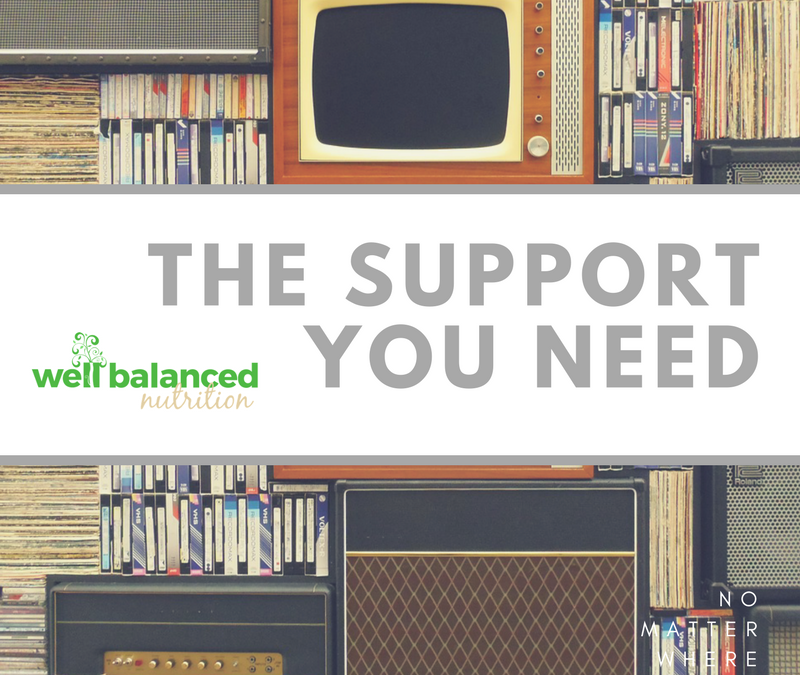
by Lucy | Jan 1, 2018 | Motivational Mondays
Last week, in a delicious yoga class at the
Hot Asana studio near Southpoint, our instructor offered props and said, “this is not to make you move, but to help you feel supported.“ This made me think of our goal at
Well-Balanced Nutrition. When most of the environment around us promotes convenience food and unbalanced options, it is our mission to give you knowledge, tools, and support to make choices that will have you feeling your best, not just surviving the day. At the same time, we aren’t forcing you to make any changes and here’s why.
Want to vs supposed to
The USDA tells us we are supposed to do 30-minutes of physical activity every day. We are supposed to eat at least five servings of fruit and vegetables… Or is it nine? We’re supposed to get eight hours of sleep. And we’re supposed to be taking at least 10,000 steps. What is your gut reaction to supposed to?
Now on the flip side, I’m curious to know what you want to do? For instance, I want to eat well balanced because I feel better when I include a fruit or vegetable with each meal or snack. I feel well rested when I get at least seven hours of sleep each night. Luckily, walking is my zen time so physical activity comes naturally. I do these things because I want to.
I know from years of practicing dietetics that if somebody is told to change, but they don’t really want to, the change is less likely to stick. You have to make the decision for yourself. Sometimes, that means changing your perspective. I do this because I want to feel better, not because I’m supposed to do this. Other times, it could mean you are simply not ready to change and that’s okay.
Choosing the right “brain food”
If you want to make a change, choosing the right brain food is important. All forms of media we take in are what I call “brain food.” For instance, if you watch evening television and suddenly find yourself craving pizza, it may be due to a Dominos commercial. While driving down the road you see a billboard for a giant juicy hamburger, it may trigger the brain to crave those foods. The people you spend time with, the places you go, where you buy food, the social media you enjoy, the books you read, the radio stations you listen to, the shows you watch, the recreation activities you do, etc. are all sources of brain food.
Ways we offer support
You can
follow us on Instagram where we post some of our favorite meal ideas or little things we find fun or inspirational throughout our day or
join our closed Facebook group where everyone shares recipes and supports one another. We offer accountability with our
Healthy Habit Tracker and one-on-one sessions for personalized support. If you are ready, we are here for you. Even if you are just
considering change, you know you can find some good “brain food” here.
Food for thought:
- What are you feeding your brain and how is it supporting you and your well-being?
- Who can you ask for support?
- What books or resources will give you more knowledge?
- Where can you find social support?
If you need more support or just want to talk about the next steps on your wellness journey,
click here to schedule a free call with one of your friendly dietitians at Well-Balanced Nutrition.
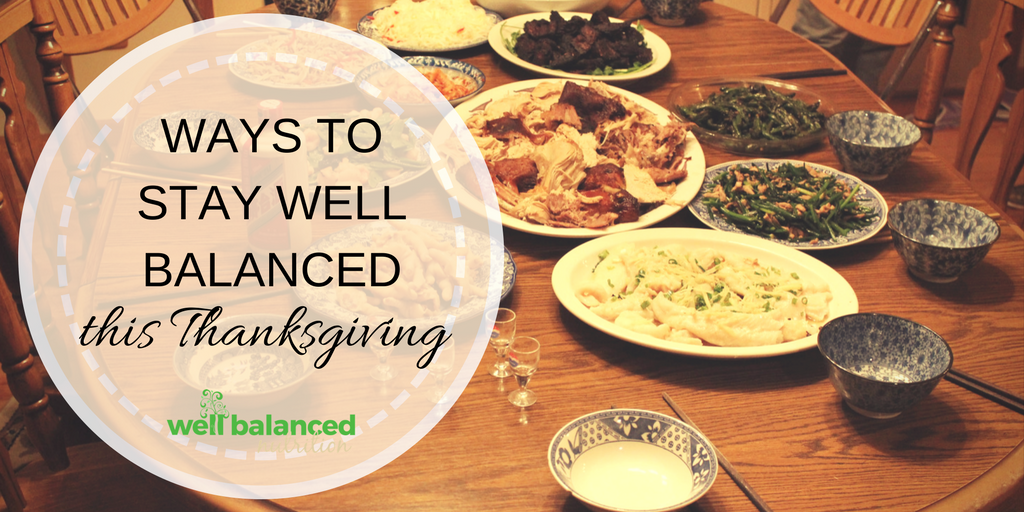
by Kristen Norton | Nov 19, 2017 | Motivational Mondays
This week came up fast. It has been a busy month at my house. Longer than usual work hours have meant less family time and more stress. That’s the way it happens. We don’t plan to get stressed out. We just find ourselves all of a sudden overwhelmed. Then the holiday comes. We say that the holidays are stressful but sometimes it’s just life that is stressful in the first place, and the extra holiday activities are just icing on the cake.
Stress can make healthy eating decisions challenging in general, and this time of year we are often forced out of our comfortable routines and put into more situations that feel beyond our control. How do you handle the stress and the abundance of food without letting it derail you from your goals? A holiday wellness planning session is the place to start! Here’s how some of my clients and I are planning to stay well-balanced.
Jan* is traveling back home for Thanksgiving. She has been on a steady journey of changing the way she eats and drinks. She’s lost weight, feeling great, and doesn’t want the momentum to stop. At her holiday wellness planning session, we discussed her favorite foods this time of year. She will thoroughly enjoy those foods that are special to her including pumpkin pie. At the same time, she will balance her plate with some vegetables and start her day with a healthy, balanced breakfast (a veggie-packed crustless quiche). She also intends to start a new tradition with her aunts and cousins to play Wii sports or have a little Wii dance party. Her plan allows room to enjoy those things that are unique and nostalgic while keeping her meals balanced and finding a fun way to build movement into her family time.
Keri* is on a mission to live well-balanced and have a healthy relationship with food. She gets a little stressed out over the abundance of food still left after her family’s big meal. One piece of advice I often hear is to not worry about one or two indulgent meals – it’s not enough to throw your progress off track. This is true. But when you have lots of sweet and starchy leftovers like mashed potatoes, sweet potatoes, cookies, and pies to eat for days and days, that’s when things get tricky. At her holiday wellness planning session, we brainstormed some ways to get back to well-balanced eating even with an abundance of leftovers. One strategy was to use the freezer, using this advice on what freezes well and what doesn’t. And another idea is to be more mindful when planning the meal. Here’s a handy tool that helps you decide how much food to buy based on how many “big” and “small eaters” you will have at your celebration.
As for me, Thanksgiving meal is all about homemade mashed potatoes with gravy and rolls. This combo is the ultimate comfort food from my past. I will be adding turkey, a salad, and mixed roasted vegetables to balance out my plate. I’ll also be doing my best to journal, drink tea, and meditate to help me get a handle on any stress that might pop up. Lastly, exercise brings me mental clarity, makes me stronger, and keeps me energized, so I’m going to plan for movement 2-3 days a week.
Food for Thought: What’s your holiday game plan?
Making a plan in your head is helpful but often does not equate to action. Talking it out with a Well Balanced dietitian will help you put your goals into action and give you some accountability as well. Knowing you get to check back in to review your progress will keep you motivated to follow through. One client says, “I’ve received very practical, concrete solutions. The coaching I receive is invaluable to learning how to approach food with a balanced mindset.”
P.S. If you want to talk about your personal game plan, create action steps, and follow up for accountability, reach out to your dietitian today! Not working with us yet? Your first call is always free and meetings are virtual so you can easily fit them into your schedule!
HAPPY THANKSGIVING!
*Names have been changed to protect privacy.
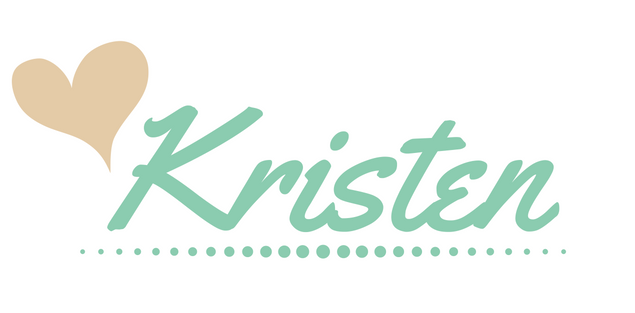
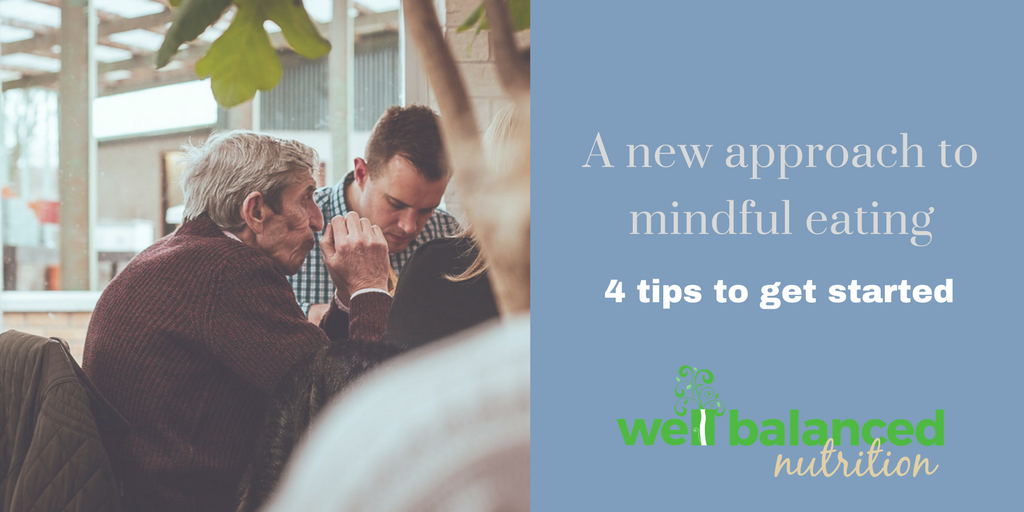
by Lucy | Oct 25, 2017 | Motivational Mondays
You know that empty feeling after you eat? The times you think, “that was so unsatisfying.” What if there is a different way to get the most nutrition and enjoyment from your food.
A client, who we will call Eric, was recently diagnosed with melanoma stage III. Eric is a young and otherwise healthy guy who typically eats a plant-based diet. He admitted to regularly eating a bowl of sugary cereal and milk at the end of the day for many years but with the diagnosis he a made the decision to cut out those foods. Eric is especially sensitive to sugar and has become choosier about what sweets he will eat. In the beginning, after the diagnosis, Eric was very fearful of food. He questioned what foods prevent a recurrence of cancer and what he should avoid.
It’s not what you’re eating, it’s how you’re eating it
Eric told me he was visiting a retired gentleman who offered him a Hershey kiss. Eric politely accepted this treat with the intention of getting rid of it later, at which point the gentleman said, “while you’re having one, I’ll eat one too.” In order not to offend his friend, he decided to join him in eating the chocolate.
I asked Eric what he’s learned since easing up on his sugar and carbohydrate restriction over the past two months. Eric thought for a moment and said he realized he needs to put less emphasis on what he is eating and more emphasis on how he is eating. This literally stopped me in my tracks. In a previous conversation, I had briefly mentioned mindful eating to Eric, but didn’t go into much detail. That’s why I was so impressed at how he came to this decision. Eric noticed after eating a meal while being distracted with computer work or in a meeting it did not feel as nourishing as those he savored and enjoyed more mindfully. For him, that means taking time to eat without distractions. Slowing down to savor the look, taste, smell, and textures of the foods.
The food and cancer conversation is highly controversial and there is a lot of conflicting science-based evidence out there. At Well-balanced Nutrition, we encourage people to embrace natural food, such as those items that are clearly coming from the farm, orchard or mother nature. I still have not come across an Oreo bush or pizza tree. When reading a food label, I don’t often look at the numbers. I want to know the ingredients. What is in the food?
Eric recognizes when he eats more slowly and enjoys the meal mindfully it feels more satisfying and enjoyable. He decided to take this a step further and plan for future meals. For instance, when thinking about Thanksgiving, he plans to take more time during that meal to savor the smell, taste, and appearance of the special holiday dishes. He plans on taking regular breaks throughout the meal – putting the fork down and enjoy the moment.
Here are 4 ways to start practicing
- Spend time considering the foods that are #WorthIt beforehand to make a mindful decision each time you eat
- Before shared meals and holidays imagine the event and sitting at the table
- Spend time savoring the meal (the look, taste, textures, smell, etc.)
- Stop during the meal – perhaps consciously putting the fork down in between bites – to slow the pace of how you eat
Food for thought:
We know making healthy food choices is important for reaching our health and wellness goals. When I’m being mindful and tuning in with what I really need, I tend to avoid the less nourishing options because I know they won’t make me feel better. How can you include a mindful technique to get more from your meals?
Let us know how we can help you on the journey! Contact us to get started today.

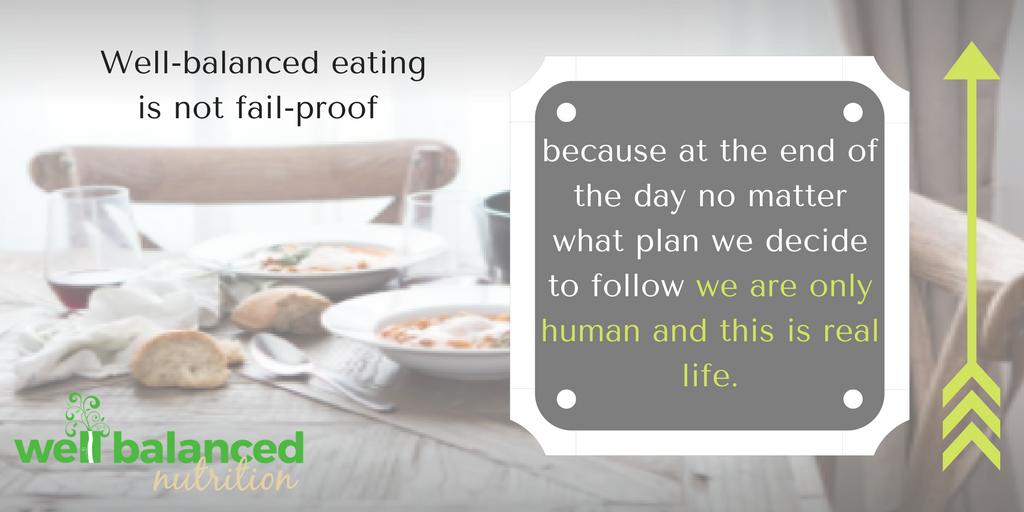
by Lucy | Sep 18, 2017 | Motivational Mondays
Monday, Sept 18, 2017
I just don’t do this often but I’m putting my foot down. There will be no more self-afflicted food shaming.
As Kristen eloquently states in her blog post, Why Well-Balanced Eating is NOT fail proof,
“Well-balanced eating (and well-balanced living for that matter) is not fail-proof because at the end of the day no matter what plan we decide to follow we are only human and this is real life.
Too often we expect the journey to be picture perfect and we don’t plan for the struggles. It doesn’t matter the number of mistakes, slips, failures – no matter what you call them – that you have, it’s how you embrace them and what you do next that matters the most. Lucy and I like to call them LESSONS because there is always something you can learn or a way you can grow from something not going the way you hoped. We can get a lot further if we embrace the struggle, have compassion for ourselves and never let our setbacks define us.”
Here to help (not judge)
Last week, I got to see a client who decided to enjoy free queso day at Moe’s Southwest Grill. She returned to her office just before our meeting and promptly said, “don’t judge me!”
I want to let everyone know, Kristen and I are not judging you. In fact, our goal is to support and encourage you, which we could not do if we were busy judging the people we want to help. Eat the queso! Just try do it mindfully.
On other occasions, people say “I shouldn’t have eaten…” which is personal food shaming for the decision made in the moment. We know from the article on, HALT that people tend to make the least healthy decisions when they are hungry, angry/frustrated, lonely, tired, or sometimes bored. If that’s the case, doesn’t it make sense to set ourselves up for success? Instead of spending time and energy thinking about what I “shouldn’t have done,” it will serve us better to learn the lesson and think about how to set up for success in the future.
For example, if I find myself eating the free food in the breakroom all morning because I didn’t eat breakfast, now I know I need to prioritize finding quick, convenient, and well-balanced breakfast options. Or if you notice you feel bad each time you eat out for lunch, it’s time to focus on bringing homemade meals to eat at lunch.
Food for thought:
Eating is supposed to feel good! Not only is it yummy, there is also a dopamine release creating a pleasurable experience to encourage us to keep eating regular meals and snacks. When eating is combined with shame, instead of feeling good we feel terrible.
This week take a moment to notice that little voice that says “shouldn’t.” How can you rephrase that into what you want or what will feel good? What lessons have you learned to help you make better choices?



